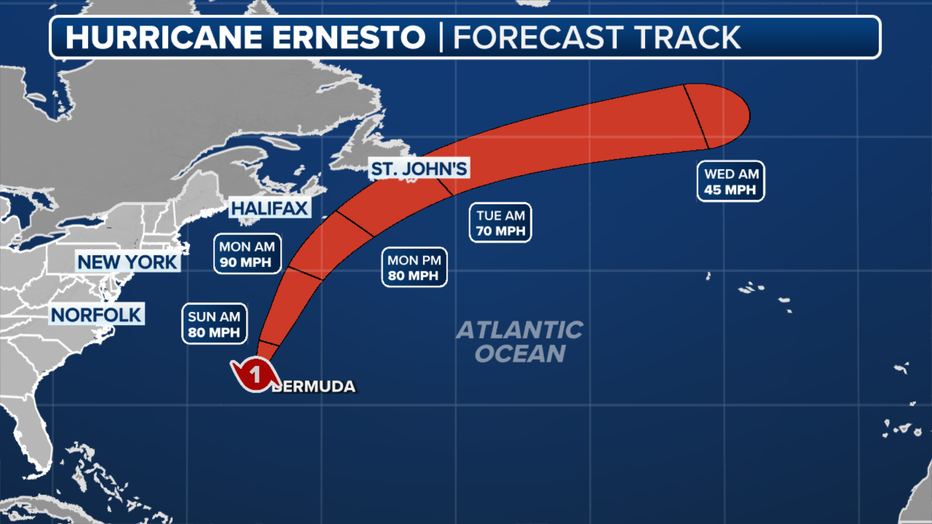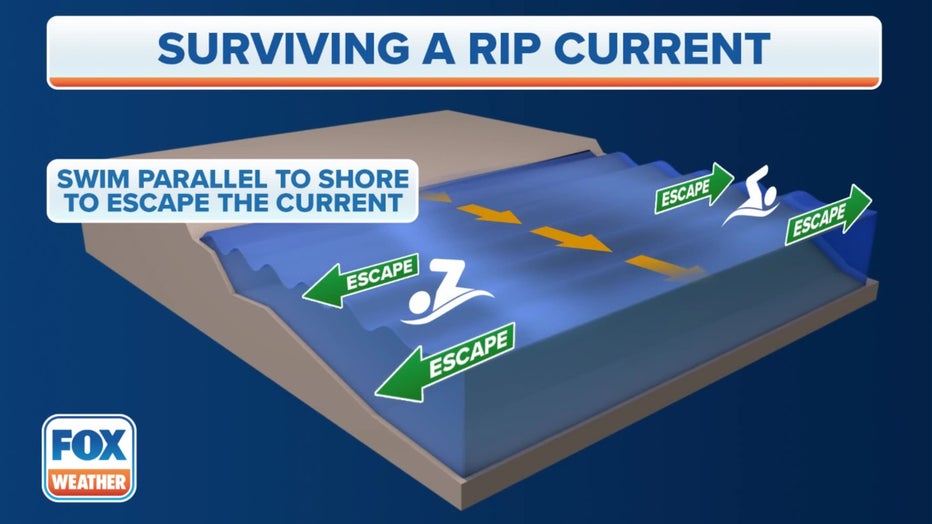Ernesto makes landfall: See the impacts it will have on the East Coast
Even with Hurricane Ernesto passing several hundred miles off the U.S. East Coast, beaches from Florida to Maine are expecting an increase in rip currents and surf that could make ocean ventures dangerous through the weekend.
Ernesto formed in the Atlantic Ocean on Monday before impacting Caribbean islands such as St. Croix and Puerto Rico with tropical storm conditions.
Hurricane Ernesto was slowly pulling away from Bermuda after making landfall as a Category 1 hurricane on the western side of the island early Saturday.
Despite being downgraded to a Category 1 storm during its final approach, Bermuda was smacked with 85 mph winds, heavy rain, pounding waves and storm surge.
Significant troughing off the East Coast has long been expected to act as a barrier, keeping the hurricane from making a direct strike on the U.S. However, the storm is not far enough away to prevent indirect impacts from reaching the shoreline.

Tracking Hurricane Ernesto. (FOX Weather)
Some National Weather Service offices in the Sunshine State said it will likely be over the weekend and into next week before the majority of communities along the coast start to see increased wave action.
At first, beachside communities can expect to see a longer period of swells before the chance of rip currents and surf gradually increases.
HURRICANE WATCH ISSUED FOR BERMUDA AS ERNESTO COULD BECOME A MAJOR HURRICANE
The threat is considered significant enough that the National Hurricane Center is warning about the dangers in its advisories.
"Even though Ernesto is forecast to remain well offshore of the U.S. East Coast, swells generated by the storm are expected to reach the area late this week and into the weekend," NHC forecasters wrote. "Beachgoers should be aware of a significant risk of life-threatening surf and rip currents, and stay out of the water if advised by lifeguards."
Rip currents form when water piles up, creating a narrow, fast-flowing stream that swiftly carries swimmers away from shore, often catching them off guard. These currents can move at speeds of up to 8 feet per second.
Tropical cyclones such as Beryl and Debby earlier in the season caused an increase in rip currents along parts of the U.S. coastline, but no fatalities have been tied to the events.

Swimmers are advised to swim parallel to the shoreline if caught in a rip current. (FOX Weather)
Dozens have perished in rough waters during 2024
As of Aug. 4, at least 30 people have died due to rip currents or rough surf around the country, according to NOAA data.
Most fatalities have occurred in Florida, but beaches in Puerto Rico and the Carolinas have seen significant events.
During most events where a fatality was caused by surf, lifeguards flew a single red flag, which means swimming is discouraged due to dangerous conditions.
Many lifeguard organizations use colored flags as a way to alert beachgoers to the ever-changing ocean conditions.
A green flag indicates a low threat of hazardous conditions, while a double red flag means the water is closed to the public.
A significant increase in rip currents usually results in a single red flag being hoisted at beaches, but conditions can vary depending on a region’s topography.

